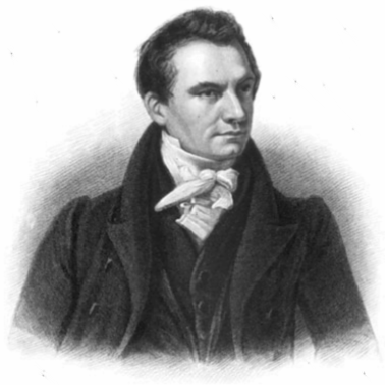|
Church–Turing–Deutsch Principle
In computer science and quantum physics, the Church–Turing–Deutsch principle (CTD principle) is a stronger, physical form of the Church–Turing thesis formulated by David Deutsch in 1985. The principle states that a universal computing device can simulate every physical process. History The principle was stated by Deutsch in 1985 with respect to finitary machines and processes. He observed that classical physics, which makes use of the concept of real numbers, cannot be simulated by a Turing machine, which can only represent computable reals. Deutsch proposed that quantum computers may actually obey the CTD principle, assuming that the laws of quantum physics can completely describe every physical process. An earlier version of this thesis for classical computers was stated by Alan Turing's friend and student Robin Gandy in 1980. See also * Bekenstein bound * Digital physics * Holographic principle * Quantum complexity theory Quantum complexity theory is the su ... [...More Info...] [...Related Items...] OR: [Wikipedia] [Google] [Baidu] |
Computer Science
Computer science is the study of computation, automation, and information. Computer science spans theoretical disciplines (such as algorithms, theory of computation, information theory, and automation) to practical disciplines (including the design and implementation of hardware and software). Computer science is generally considered an area of academic research and distinct from computer programming. Algorithms and data structures are central to computer science. The theory of computation concerns abstract models of computation and general classes of problems that can be solved using them. The fields of cryptography and computer security involve studying the means for secure communication and for preventing security vulnerabilities. Computer graphics and computational geometry address the generation of images. Programming language theory considers different ways to describe computational processes, and database theory concerns the management of repositories ... [...More Info...] [...Related Items...] OR: [Wikipedia] [Google] [Baidu] |
Computable Real
In mathematics, computable numbers are the real numbers that can be computed to within any desired precision by a finite, terminating algorithm. They are also known as the recursive numbers, effective numbers or the computable reals or recursive reals. Equivalent definitions can be given using μ-recursive functions, Turing machines, or λ-calculus as the formal representation of algorithms. The computable numbers form a real closed field and can be used in the place of real numbers for many, but not all, mathematical purposes. Informal definition using a Turing machine as example In the following, Marvin Minsky defines the numbers to be computed in a manner similar to those defined by Alan Turing in 1936; i.e., as "sequences of digits interpreted as decimal fractions" between 0 and 1: The key notions in the definition are (1) that some ''n'' is specified at the start, (2) for any ''n'' the computation only takes a finite number of steps, after which the machine produces the ... [...More Info...] [...Related Items...] OR: [Wikipedia] [Google] [Baidu] |
Principles
A principle is a proposition or value that is a guide for behavior or evaluation. In law, it is a rule that has to be or usually is to be followed. It can be desirably followed, or it can be an inevitable consequence of something, such as the laws observed in nature or the way that a system is constructed. The principles of such a system are understood by its users as the essential characteristics of the system, or reflecting system's designed purpose, and the effective operation or use of which would be impossible if any one of the principles was to be ignored. A system may be explicitly based on and implemented from a document of principles as was done in IBM's 360/370 ''Principles of Operation''. Examples of principles are, entropy in a number of fields, least action in physics, those in descriptive comprehensive and fundamental law: doctrines or assumptions forming normative rules of conduct, separation of church and state in statecraft, the central dogma of molecular biolog ... [...More Info...] [...Related Items...] OR: [Wikipedia] [Google] [Baidu] |
Alan Turing
Alan Mathison Turing (; 23 June 1912 – 7 June 1954) was an English mathematician, computer scientist, logician, cryptanalyst, philosopher, and theoretical biologist. Turing was highly influential in the development of theoretical computer science, providing a formalisation of the concepts of algorithm and computation with the Turing machine, which can be considered a model of a general-purpose computer. He is widely considered to be the father of theoretical computer science and artificial intelligence. Born in Maida Vale, London, Turing was raised in southern England. He graduated at King's College, Cambridge, with a degree in mathematics. Whilst he was a fellow at Cambridge, he published a proof demonstrating that some purely mathematical yes–no questions can never be answered by computation and defined a Turing machine, and went on to prove that the halting problem for Turing machines is undecidable. In 1938, he obtained his PhD from the Department of ... [...More Info...] [...Related Items...] OR: [Wikipedia] [Google] [Baidu] |
Quantum Complexity Theory
Quantum complexity theory is the subfield of computational complexity theory that deals with complexity classes defined using quantum computers, a computational model based on quantum mechanics. It studies the hardness of computational problems in relation to these complexity classes, as well as the relationship between quantum complexity classes and classical (i.e., non-quantum) complexity classes. Two important quantum complexity classes are BQP and QMA. Background A complexity class is a collection of computational problems that can be solved by a computational model under certain resource constraints. For instance, the complexity class P is defined as the set of problems solvable by a Turing machine in polynomial time. Similarly, quantum complexity classes may be defined using quantum models of computation, such as the quantum circuit model or the equivalent quantum Turing machine. One of the main aims of quantum complexity theory is to find out how these classes relate ... [...More Info...] [...Related Items...] OR: [Wikipedia] [Google] [Baidu] |


